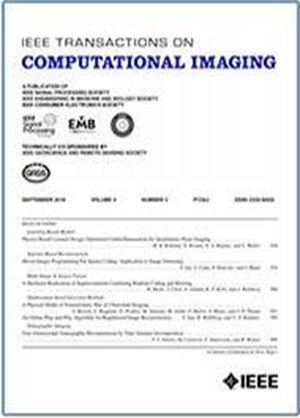Swap-Net:一种内存高效的2.5D网络,用于稀疏视图三维锥束CT重建到ICF应用
IF 4.8
2区 计算机科学
Q2 ENGINEERING, ELECTRICAL & ELECTRONIC
引用次数: 0
摘要
在从医学到惯性约束融合(ICF)的许多成像应用中,从有限的投影集重建三维锥束计算机断层扫描(CBCT)图像是一个重要的逆问题。当可用的投影数量有限时,滤波反投影(FBP)和基于模型的正则化等传统方法的性能不是最佳的。在过去的十年中,深度学习(DL)在求解CT逆问题方面得到了广泛的应用。一种典型的基于dl的CBCT图像重建方法是通过训练2D或3D网络来学习端到端映射。然而,二维网络不能充分利用全局信息。虽然3D网络是理想的,但由于高内存成本,随着图像大小的增加,它们变得不切实际。本文提出了Swap-Net,一种用于稀疏视图三维CBCT图像重建的内存高效2.5D网络。Swap-Net使用一系列新颖的轴交换操作以端到端方式重建3D体,而无需使用完整的3D卷积。ICF的模拟结果表明,Swap-Net在减少人工制品和保留与ICF社区相关的复杂流体动力学模拟细节方面,在定量和定性方面始终优于基线方法。本文章由计算机程序翻译,如有差异,请以英文原文为准。
Swap-Net: A Memory-Efficient 2.5D Network for Sparse-View 3D Cone Beam CT Reconstruction to ICF Applications
Reconstructing 3D cone beam computed tomography (CBCT) images from a limited set of projections is an important inverse problem in many imaging applications from medicine to Inertial Confinement Fusion (ICF). The performance of traditional methods such as filtered back projection (FBP) and model-based regularization is sub-optimal when the number of available projections is limited. In the past decade, deep learning (DL) has gained great popularity for solving CT inverse problems. A typical DL-based method for CBCT image reconstruction is to learn an end-to-end mapping by training a 2D or 3D network. However, 2D networks fail to fully use global information. While 3D networks are desirable, they become impractical as image sizes increase because of the high memory cost. This paper proposes Swap-Net, a memory-efficient 2.5D network for sparse-view 3D CBCT image reconstruction. Swap-Net uses a sequence of novel axes-swapping operations to reconstruct 3D volumes in an end-to-end fashion without using full 3D convolutions. Simulation results on ICF show that Swap-Net consistently outperforms baseline methods both quantitatively and qualitatively in terms of reducing artifacts and preserving details of complex hydrodynamic simulations of relevance to the ICF community.
求助全文
通过发布文献求助,成功后即可免费获取论文全文。
去求助
来源期刊

IEEE Transactions on Computational Imaging
Mathematics-Computational Mathematics
CiteScore
8.20
自引率
7.40%
发文量
59
期刊介绍:
The IEEE Transactions on Computational Imaging will publish articles where computation plays an integral role in the image formation process. Papers will cover all areas of computational imaging ranging from fundamental theoretical methods to the latest innovative computational imaging system designs. Topics of interest will include advanced algorithms and mathematical techniques, model-based data inversion, methods for image and signal recovery from sparse and incomplete data, techniques for non-traditional sensing of image data, methods for dynamic information acquisition and extraction from imaging sensors, software and hardware for efficient computation in imaging systems, and highly novel imaging system design.
 求助内容:
求助内容: 应助结果提醒方式:
应助结果提醒方式:


